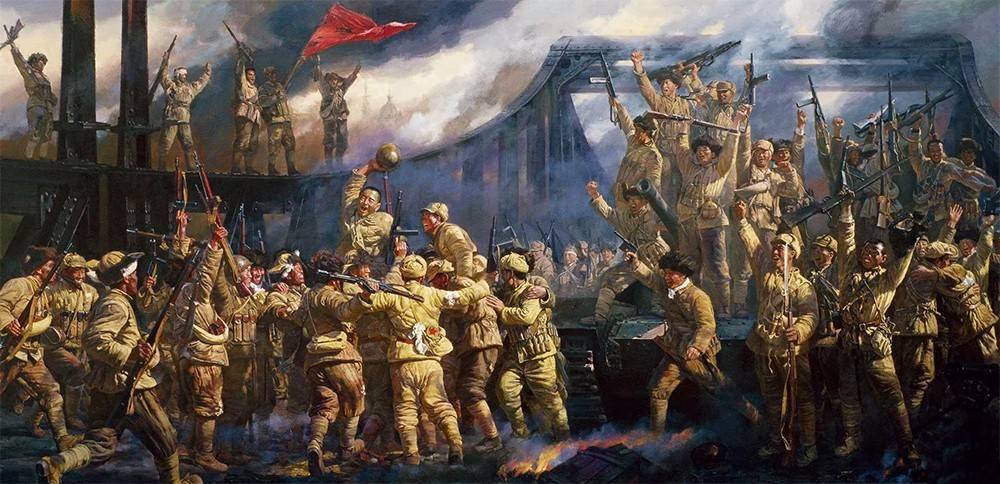Do you know the three major battles in the War of Liberation?
The three major battles refer to the strategic decisive battle between the Chinese People’s Liberation Army and the Kuomintang army from September 12, 1948 to January 31, 1949, including the Liaoshen Campaign, the Huaihai Campaign, and the Pingjin Campaign. The victory of the three major battles laid the foundation for the victory of the People’s Liberation War throughout the country.
The Battle of Pingjin was the last of the three major battles in the strategic decisive battle of the War of Liberation. The victory of the Battle of Ping-Jin brought the ancient cultural capital of Beiping and the large industrial and commercial city of Tianjin back to the hands of the people, and a new chapter in history has since been written.
The gunpowder has gone, and the horn is still echoing. There is a modern exhibition hall on the banks of the Ziya River in Hongqiao District, Tianjin City, which comprehensively introduces the Battle of Pingjin-Pingjin Battle Memorial Hall.
In 1994, the Central Committee of the Communist Party of China decided to build the Pingjin Battle Memorial Hall in Tianjin. In 1995, the foundation of the project was laid, and the 1997 Pingjin Battle Memorial Hall held an opening ceremony.
The Pingjin Battle Memorial Hall is mainly composed of four parts: Victory Square, Main Exhibition Hall, Multi-Dimensional Demonstration Hall and Junwei Garden.
The theme of Victory Square is “Victory”. The open front square is semicircular, with red interlocking brick paving, a national flag pole stands in the center, and a five-star red flag is flying high. Two arc-shaped granite reliefs reflecting the celebration of the victory of the two armies and the victory of the military and the civilians are arranged on both sides of the front square. Two columns made of five red granites form the victory gate. On the tops of the columns stand two warriors respectively. A wrought bronze statue of a gun celebrating victory. Enter the granite-paved main square through the Victory Gate. On the east and west sides, there are two large groups of large forged bronze sculptures, artillery, tanks, and “Fighting Side by Side”, which symbolizes the courage of two armies and the “People’s Support Front” which symbolizes the deep friendship between the military and civilians Large weapons such as armored vehicles are arranged.
In the center of the Victory Square stands a victory monument in the shape of a three-sided spear pierced into the sky. The spear handle is a Great Wall shape. There are three giant steel rings on the upper and lower sides at the junction of the “spear sting” and the “handle”. Below the monument is a large fountain that can change various shapes. Under the illumination of colorful lights, water splashes are sprayed into the air with the majestic military music.
The main exhibition hall of the memorial hall is a three-story building in the shape of a dougong, majestic and tall. The warm gray granite finishes are simple in shape, simple and solemn, which not only contains traditional Chinese charm, but also has a modern aesthetic style. The seven golden characters of “Pingjin Battle Memorial Hall” inscribed by Marshal Nie Rongzhen are inlaid on the forehead of the huge archway-style eyebrows of the exhibition hall, adding brilliance and charm to the memorial hall. The back area is a huge silver-gray sphere building made of metal materials, which is magnificent.
The exhibition hall uses modern sound, light, electricity and other high-tech means to combine the panoramic large-screen universal movie, background paintings, and miniature battlefield landscapes. The grand scene of the Battle of Ping-Jin is vividly reproduced in a novel and unique audio-visual art form. The display content in the museum is relatively rich. The “prologue hall”, “campaign decision”, “campaign implementation”, “people’s support” and “great victory” are displayed in the museum. It is composed of six parts including “Achievement of Heroes”.
The Pingjin Battle Memorial Hall has now become an important base for national patriotism education, an important carrier for national defense education, an important classroom for revolutionary traditional education, an important window for the construction of spiritual civilization, and an important position for promoting advanced culture. It has been listed as one of the country’s one hundred. Patriotism Education Demonstration Base, Advanced Unit of National Patriotism Education Demonstration Base, National Red Tourism Classic Scenic Spot.
In 2020, the Pingjin Battle Memorial Hall was selected as the “Fourth Batch of National First-Class Museum List”.
(The picture comes from the Internet)
Responsible editor : Li Xiaoxia

You must log in to post a comment.